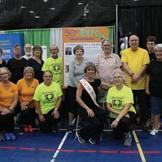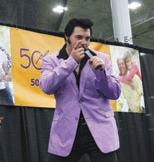














Dear Jonathan: I am a widower and have three adult children. I happened to mention to one of my daughters that I would like someone to help me with bill paying. I am at that point in my life that I’m starting to become forgetful, and I don’t want to have to worry about forgetting to pay my bills.

My daughter said she would help and suggested I put her on my bank account. I told her that would be fine, but I want her to share whatever money is left in that account with her siblings when I pass away.
She promised me that she would do that. Do you see any issues with this approach?
Jonathan says: You can certainly add your daughter to your bank account so she can bank and pay bills for you.
When you pass away, however, she will legally own whatever money is left in that account, and if she understands it is legally hers to keep notwithstanding your intent, she may decide to keep it.
If you want the money in that account to be divided equally between your children when you die, having your daughter on the account is not the best plan.
Even if she decides to honor your wishes and share that money with your other children, whatever she gives to her siblings will be deemed a gift, which could have gift-tax consequences depending on the size of the gift.
Also, if she dies before making those gifts to your other children, that money would become part of her estate; if she has a spouse or children, that money would, most likely, end up going to them and not to her siblings.
You should contact your bank and find out whether they will allow you to name your daughter on your account for convenience purposes only. This means that your daughter would only have check-writing privileges but would not be a co-owner of the account.
Consequently, she could not claim any ownership of the funds in that account upon your death.
Finally, you might want to consider preparing a financial durable power of attorney that names your daughter as your agent, which would allow her to handle your financial affairs, including banking and check writing. Rather than putting your daughter’s name on your account, this instrument would provide her with the necessary authority to act on your behalf.
Before doing anything, I recommend you consult with an estate-planning attorney, who can explain to you the benefits of implementing a financial durable power of attorney, as well as engaging in estate planning in general.
Good luck.
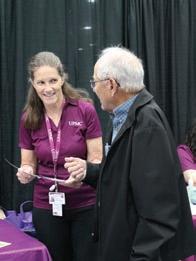



















Corpor AtE offiCE
P.O. Box 8049, Lancaster, PA 17604
Phone (717) 285-1350
(610) 675-6240
Fax (717) 285-1360
Email address: info@onlinepub.com
Website address: www.onlinepub.com
prESiDENt AND pUBLiSHEr Donna K. Anderson
EDitoriAL
Vice president and Managing Editor
Christianne Rupp
Editor, 50plus publications
Megan Joyce
Art DEpArtMENt
project Coordinator
Lauren Phillips
BUSiNESS DEVELopMENt
Senior Marketing Consultants
Joshua Binkley
Angie Willis
Events Manager
Kimberly Shaffer
ADMiNiStr AtioN
Business Manager
Elizabeth Duvall


Awards



50 plus Life is published by On-Line Publishers, Inc. and is distributed monthly among senior centers, retirement communities, banks, grocers, libraries and other outlets serving the senior community.
On-Line Publishers, Inc. will not knowingly accept or publish advertising which may be fraudulent or misleading in nature.
Views expressed in opinion stories, contributions, articles and letters are not necessarily the views of the publisher. The appearance of advertisements for products or services does not constitute an endorsement of the particular product or service. The publisher will not be responsible for mistakes in advertisements unless notified within five days of publication. On-Line Publishers, Inc. reserves the right to revise or reject any and all advertising. No part of this publication may be reproduced or reprinted without permission of On-Line Publishers, Inc.
We will not knowingly publish any advertisement or information not in compliance with the Federal Fair Housing Act, Pennsylvania State laws or other local laws.
By Lynda Hudzick
“I truly don’t remember a time when water and swimming were not a part of my life,” Jeannie Zappe said. “I like the quietness of being underwater. It is my yoga, my meditative place.”
In 2022, at the age of 56, Zappe, who is now a swim coach and motivational speaker, completed the Triple Crown of Open Water Swimming, which included 29 miles around Manhattan (2019), 21 miles across the English Channel (2021), and 20 miles across the Catalina Channel (2022) as a solo swimmer.
Now a resident of Mechanicsburg, Zappe grew up in Bloomsburg, where she and her two sisters enjoyed spending many hours in their aboveground pool.
“We moved to a school with an indoor pool when I was in eighth grade, and that changed my life,” she said. “I was able to join the high school team and have never stopped swimming.”

her master’s degree in business administration. But swimming was still in her blood, and in 1999, she joined a Masters swim team and returned to competing in meets and at Masters Nationals. In 2009, Zappe said she realized she had “done all that I wanted to do in my various positions at Bucknell … it just seemed like the end of a chapter.”
The opening of her next chapter came in the form of a request by her son’s swim coach, asking her to return to coaching.
“For some reason I felt that I didn’t know enough to coach anymore,” she said.

Upon graduating from high school, Zappe started teaching and coaching swimming, something she continued to do throughout her college career at Penn State University.
She thought about pursuing a professional career in coaching, but at the time, she wasn’t sure how to go about it. She simply didn’t know much about collegiate swimming or coaching.
“I didn’t swim on the PSU swim team, but I continued to swim for fitness and intramurals in college,” she said.
After graduating from PSU with a Bachelor of Science degree in quantitative business analysis, Zappe enjoyed a 20-year career in information technology at Bucknell University, where she earned
Under his tutelage, though, she regained her confidence and returned to coaching with the Sunbury YMCA.
“In the meantime, I got certified to teach efficient freestyle through Total Immersion,” she said. “And my love of openwater swimming was born!”
Zappe explained that to her, the difference between open-water swimming and swimming in a pool is like the difference between running on the open road and running on a treadmill.
“In open water, I feel free and open and there are no walls. It’s pure adventure to me,” she said.
Her first foray into open-water swimming was a 1-mile swim in a lake in 2010 … which led to swimming in rivers, oceans, bays, and channels and from 2-mile swims to 3 miles, 10 miles, and 15 miles, and then 29 miles around Manhattan in 2019.
Even as she was building her swimming career, she was busy building her coaching career, working with West Shore YMCA, Messiah University, and Keystone Aquatics. Zappe continues to provide private coaching services for competitive swimmers and adults.
“I love the relationships I build with my swimmers,” she said. “I tell people that I really teach confidence, and swimming is merely the way I do it.”
Finding the confidence in yourself that is needed to pursue a dream in any field can be tough, and sometimes it takes a while to get there.
“From 2014–2017, I was lucky enough to do all three of the Triple Crown swims as part of a six-person relay team with friends. In those swims, we swim for one-hour increments in rotation. We go when the (boat) pilot says we can go. That gave me exposure to those bodies of water,” she said.

running onto the shores of Wissant, france, after nearly 15 hours of swimming from Dover, England.
It also gave her an idea — could she do these swims on her own?
“On the last one of those team swims, the English Channel, I remember wondering if I could do it alone … it took a year of pondering, but I booked a pilot for a solo swim one year later.”
Zappe made good on her promise to herself to try to achieve the Triple Crown as a solo swimmer. It wasn’t easy. The order in which she had hoped to accomplish the swims, using each one to train for the next, had to be changed due to COVID.
Her most difficult, and coincidentally final, swim took place in September 2022: the Catalina Channel, a stretch of Pacific Ocean that flows between Santa Catalina Island and the coast of Southern California.
“It’s a 21-mile swim and the only swim I have done where I had to cross the channel by boat before swimming it. In other words, you look at the whole darn swim before attempting it,” she said.
Rough currents, thanks to a hurricane passing through two days before, made the swim even more difficult than it might have been.
“I swam largely in place for about six hours, making little progress due to the strong currents. It was a very mentally challenging swim,” she said.
Although she swims alone, and must be medically cleared before attempting a solo swim, Zappe is far from being alone when she’s out there in the water.
“I have a team with me … they truly take care of me,” she said. “They are in charge of throwing my liquid feeds and meds to me, they keep me on pace or tell me to swim faster … they encourage me and they watch every stroke I take.

After celebrating for two minutes on the shores of france, it was time for Zappe to swim back to the boat for the 2.5-hour ride back to Dover, England.


“They, along with the boat pilot who is in charge of the swim, truly hold my life in their hands. I could not do what I do without them.”
When naming their team, Zappe knew she wanted to include the word “optimist,” and after booking her boat pilot, she recalls being surprised to see his boat was named The Optimist — one hint that they were headed in the right direction in choosing a team name.
“Then, while preparing for the English Channel swim, England had been locked down due to COVID but had just lifted that restriction,” she said.
Concerned about the possibility of a 10-day quarantine, Zappe recalls one of her teammates saying they just needed to be eternal optimists, believing that it would all work out. Taking that as a sign, “our team name, the Eternal Optimists, was born,” she said.
Today, Zappe does motivational speaking about her English Channel crossing solo swim, and her Triple Crown accomplishments, through her company Eternal Optimist, LLC, located in Mechanicsburg.
“I take people across the channel with me through video and pictures … and I also share the lessons I learned about myself in preparing for it,” she said. “I love inspiring others. Find your thing and work toward it. Don’t be afraid. Ask yourself, ‘What if I can?’ It’s a very powerful question.”
Women, as Zappe said, tend to wear many hats.
“We have a tendency to put ourselves last. To feel guilty to want something for ourselves. But it’s OK; we can have it,” she said.
No matter what your age, embracing your years, and all the life experiences you’ve had, should be something to be celebrated.
“I firmly believe that I could not have swum the English Channel at age 25, 35, 45 — I needed to be 55, with my 55 years of life experience behind me,” she said. “With age comes wisdom and knowledge and perspective. Embrace it.”
on the cover: Jeannie Zappe on the morning of Sept. 6, 2021, 12 hours into her swim across the English Channel and approaching france. She and the tanker in the background were sharing the french shipping lane of one of the busiest shipping areas in the world.
















Across
1. Easy chair site
4. Mauna ___
7. Place for a nap
10. Seabird
13. For the Boys subj.
14. Bobble
15. Hail, to Caesar
16. Born
17. Wurst
19. Plantain tree growths
21. Sushi fish
22. Cigar residue
24. Eyeball-bending paintings
25. Wi-Fi
27. Mideast leaders
30. Whip
Down
1. Maid’s target
2. Son in Genesis
3. It may be proper
4. Pastoral place
5. Club publication
6. Trojan ally, in the Iliad
7. Fleet unit
8. Egg cells
9. Singing voice
10. Sicilian city
11. Derriere
12. Hatchling’s home
18. Beauty parlor
20. Church part
32. Orsk’s river
33. Harbor posting
36. Madison Square Garden, e.g.
37. Frenzied
39. Dated
41. Roll of bills
42. Cohort
44. Federal number crunchers, briefly
45. Female rabbit
46. Car nut
47. Make giddy
49. Lock horns
51. Morning moisture
53. Hamilton’s undoing
23. Wife of Zeus
26. Yawning
28. Stable place
29. Hipbones
30. Deception
31. Pigeon’s perch
32. Diacritical mark
34. Sidestep
35. Vocally
36. Piercing tool
38. Raccoon relative
40. Irish Sea feeder
43. Terra ___, finely pulverized gypsum
48. Peach or beech
54. Miffed, with “off”
55. Quartz variety
57. Fire starter?
58. Slowpoke
61. Tokyo, once
63. Inkling
67. Squeal
70. Third tonsil
72. Gibbon, for one
73. Sgt.’s address
74. Just out
75. Man-mouse link
76. Surfing site
77. Word of possibility
78. Drink in a mug
79. Mal de ___
50. Pine product
52. Homeless child
56. Twinkle
57. Runway walker
58. Diagnostic test
59. Yep’s opposite
60. Turn ___ profit
62. Comedian Carvey
64. Dire fate
65. Emerald Isle
66. Purim’s month
68. Jacuzzi
69. ___ sauce
71. Lamb’s mother
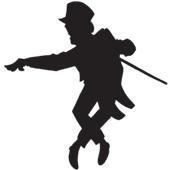
Q. Do we lose our sense of taste as we get older?
In general, sensitivity to taste gradually decreases with age. But there are some whose taste isn’t affected by getting older.
The ability to taste food and beverages means a lot to seniors. Let’s face it; we lose a lot of the pleasures of our youth, but eating well isn’t usually one of them.

Taste also has a major impact upon our physical and mental health. Our sense of taste is especially important if we have to stay on a diet. If food loses its appeal, we may eat improperly and put ourselves at risk for heart disease, stroke, and diabetes.
Loss of taste can lead us to overeat, undereat, or add too much salt or sugar to our food.
While taste is important, we recognize flavors largely through our sense of smell. Try holding your nose while eating. Smell and taste are closely linked in the brain.
It is common for people who lose their sense of smell to say that food has lost its taste. This is incorrect; the food has lost its aroma, but taste remains. Loss of taste occurs less frequently than loss of smell in older people.
When an older person has a problem with taste, it is often temporary and minor. True taste disorders are uncommon. When a problem with taste exists, it is usually caused by medications, disease, or injury.
In some cases, loss of taste can accompany or signal a more serious condition, such as diabetes or some degenerative diseases of the central nervous system, such as multiple sclerosis.
There are several types of taste disorders. You can have a persistent bad taste in the mouth. This is called a dysgeusia. Some people have hypogeusia, or the reduced ability to taste.
Others can’t detect taste at all, which is called ageusia. People with taste disorders experience a specific ageusia of one or more of the five taste categories: sweet, sour, bitter, salty, and savory.
The most common complaint is “phantom taste perception,” which is tasting something that isn’t there.
If you think you have a taste disorder, see your doctor. Diagnosis is important because once the cause is found, your doctor may be able to treat your taste disorder. Many types of taste disorders are reversible, but, if not, counseling and self-help techniques may help you cope.
If you cannot regain your sense of taste, there are things you can do to ensure your safety.
Take extra care to avoid food that may have spoiled. If you live with other people, ask them to smell and taste food to see if it is fresh. People who live alone should discard food if there is a chance it is spoiled.
Fred Cicetti is a senior and health writer with more than three decades of experience. The Healthy Geezer is devoted to the health questions of seniors who are wondering what is going on with these bodies of ours.




Dear Savvy Senior,
I work for a county health department, and every summer we’re seeing more and more seniors get sick and even die from heat-related illness. Can you write an awareness piece on the effects extreme heat has on older adults, and what they can do to guard against this summertime risk? Thanks for helping keep seniors safe!
– Health Advocate
Dear Advocate,
Happy to oblige! Most people don’t realize that each year, extreme summertime heat kills more people in the U.S. than hurricanes, floods, and tornadoes combined.
While extreme heat can be deadly for anyone, older adults are uniquely vulnerable because of three key factors: biological changes that occur with age; higher rates of agerelated diseases; and greater use of medications that can alter the body’s response to heat.

The human body has two main mechanisms to cool itself: sweating and increasing blood flow to the skin. In older adults, both of those processes are compromised. Seniors sweat less, and they have poor circulation compared with younger people.
Chronic health conditions that are more common in old age, most notably cardiovascular disease and diabetes, can also exacerbate these issues. A diseased heart isn’t able to pump as much blood, further reducing blood flow to the skin. And if the nerves become affected in people with diabetes, the body might not receive the message that it needs to start sweating.
As people age, they also stop feeling as thirsty, so they tend to drink less. In hot conditions, that can cause them to become dehydrated faster.
Here’s how to gauge the risk for a heat-related illness for you or an older loved one and how to stay safe.


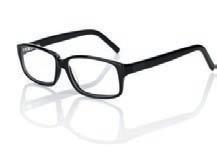
In addition, some older adults, particularly if they have some form of dementia or cognitive decline, may not perceive temperature changes as well as they used to. As a result, they won’t respond appropriately to heat, both biologically (through sweating) and behaviorally (by moving to someplace cool).
Finally, certain medications many seniors take, like diuretics and other high blood pressure drugs, can affect hydration, blood flow, and even the sweat response, so be sure to ask your doctor about any medications you’re taking.
On hot days, older adults and people with serious health conditions should limit outdoor activities like walking and gardening to the cooler mornings and evenings, take frequent breaks, and drink plenty of water, even if you aren’t thirsty.
Listen to your body. If the activity starts to feel harder than normal, that’s a signal to stop and find a place to cool down.
Signs of dehydration or heat exhaustion include dizziness, lightheadedness, headache, flushed face, a racing heart, or feeling lethargic. Low energy is especially important to watch out for in people with cognitive impairment, who may not realize how hot they are or be able to express it.
If heat exhaustion worsens to a heatstroke, it becomes a life-threatening emergency.
While older adults face unique challenges when it comes to heat, the ways to cool down are the same for any age.
If you or a loved one starts to experience any of the above symptoms, the best thing you can do is to go somewhere that has air conditioning. If AC isn’t available in the home, check if there’s a local cooling center.
In the absence of air conditioning, water is extremely helpful in reducing the risk for heat-related injury. Rubbing an ice cube or cold compress over your skin, spraying yourself with cool water, or taking a cool shower or bath can also help.
For more heat-related safety tips, visit the Centers for Disease Control and Prevention website at cdc.gov/extreme-heat.
Send your senior questions to: Savvy Senior, P.O. Box 5443, Norman, OK 73070, or visit savvysenior.org. Jim Miller is a contributor to the NBC Today show and author of The Savvy Senior book.

It’s interesting how some hormones like serotonin affect mood, and yet they’re made in the GI tract — your gut!
The gut-brain axis is a complex network in your body that allows your gut and brain to communicate through both direct and indirect pathways. This connection explains how gut health impacts brain functions and vice versa. Understanding how it works can help with many mental health issues.
Imagine the gut and brain as friends having a deep conversation over tea. The brain’s activities, like stress and mood changes, can influence gut function, and signals from the gut can affect emotional and psychological well-being.

Stress: Stress can upset the stomach, leading to physical symptoms like “gut-wrenching” feelings. Chronic stress may contribute to digestive issues and midsection fat accumulation.
Mood: The brain’s emotional state can affect gut health. Positive moods can promote a healthy gut environment, while stress, conflict, and other negative emotions can disrupt it.
Anxiety: Anxiety can cause gut disturbances, reflecting the brain’s worrisome state. Most people live with chronic anxiety these days.
Neurotransmitters: Serotonin, produced mainly in the gut, acts as a messenger, influencing mood and gut function.
Fluctuations in serotonin levels directly impact emotional states and selfesteem. Sufficient serotonin is crucial for feeling calm, happy, and emotionally stable.
Disturbances in its production or signaling can lead to mood disorders like depression and anxiety. Serotonin’s influence on mood also affects self-esteem, as feeling good biochemically can enhance feelings of value and confidence. Let’s talk about ways to help next.
1. Increase tryptophan intake: Consuming foods rich in tryptophan, such as turkey, eggs, cheese, nuts, and seeds, can boost brain serotonin levels.
2. Exercise regularly: Physical activity enhances serotonin production and receptor sensitivity, with aerobic exercises like running, cycling, and swimming being particularly effective.
3. Get plenty of natural light: Sunlight exposure increases serotonin production and helps regulate sleep and mood.
4. Manage stress: Techniques like mindfulness, meditation, and yoga can
1. maintain healthy serotonin levels and improve receptor function.
5. Consider probiotics: Probiotics can enhance gut health and potentially boost serotonin production. Foods like yogurt, sauerkraut, and kefir, or probiotic supplements, are beneficial. Probiotics improve thyroid hormone conversion, and thyroid hormone is your natural antidepressant.
6. Omega-3 fatty acids: Found in fish like salmon and sardines, and in flaxseeds and walnuts, these acids may increase serotonin receptor responsiveness. This can help improve receptor sensitivity rather than “make” more happy hormones.
7. Mindful meditation: Regular meditation can enhance serotonin transmission, potentially increasing receptor sensitivity and effectiveness. As with the omega-3s, this can improve receptor sensitivity over time.
Understanding the role of the gut in serotonin production opens new possibilities for managing mood and self-esteem. By nurturing gut health through diet, exercise, and stress management, we can influence the brain’s biochemical landscape, promoting a happier, healthier mental state.
The saying “trust your gut” now has a scientifically backed significance, highlighting the importance of maintaining a positive gut-brain connection for overall well-being.
I have a more detailed version of this article available at my website in case the topic interests you. To have it emailed, please sign up for my free weekly newsletter at suzycohen.com.
This information is not intended to diagnose, prevent, or treat your disease. For more information about the author, visit suzycohen.com.








When I first heard mention of Greenville, South Carolina, I had to look at a map to learn exactly where it is. Little did I know that it has received rave reviews from the likes of The New York Times, Condé Nast Traveler, and Travel + Leisure
It didn’t take long after I got there to agree with those accolades. More about that later.
My first impression after arriving was the inviting setting. Greenville is nestled in the foothills of the Blue Ridge Mountains.

While its population (about 70,000) gives it small-city status, the atmosphere in many ways resembles that of a small town. Adding to the attraction is a unique blend of traditional Southern charm and cosmopolitan cool.
No wonder The New York Times ranked Greenville 14th on its 2023 list of “52 Places to Go” and Condé Nast Traveler called it “No. 1 Friendliest City in the U.S.,” while Travel + Leisure reported that its culinary treasures earn it a
place among the “Best Food Cities in the U.S.”
My enjoyable task was to verify the truth of these tributes, and verify them I did. I was immediately immersed in what could be a motion-picture setting and, in fact, a number of movie scenes have been filmed in Greenville.
The center of the action and appeal, for me and many visitors, is Main Street. It’s the bustling heart of the city, with wide, tree-shaded sidewalks that lead past restaurants and bars, galleries, and an eclectic collection of boutiques in a pedestrian-friendly environment.
Typical of the diverse line-up of shops are the Cornerstone gallery, which sells crystals, minerals, and animal skulls, and skeletons; the Savannah Bee Company, which offers a free mead experience; and the local branch of Mast General Store.
The general store originally opened in 1883, selling everything “from cradles to caskets.” Along with traditional merchandise, it offers stone-ground

When you plan ahead, you can design every detail of your own final tribute and protect your loved ones from unnecessary emotional and financial burdens. When you’re ready to get started, your Dignity Memorial® professionals are here to help.
> Lock in today’s prices��> Make your final wishes known > Create a unique, meaningful memorial > Gain peace of mind for yourself and your loved ones
FUNERAL HOME, INC.
Harrisburg
717-564-2633
Stephen J Wilsbach, Supervisor
CEMETERY
Camp Hill
717-761-4055
Erin Young, Supervisor Neill
FUNERAL HOME, INC.
Camp Hill
717-737-8726
cornmeal and grits, locally produced “old-timey” soaps, and Amish-made rocking chairs.
While strolling in town, I also kept my eyes peeled for glimpses of sculptures, murals, and other public art that transform Greenville’s streets into an openair gallery. I saw one reference to more than 160 pieces of public art, including statues, fountains, plaques, and more.
Perhaps most famous is a 40foot-tall, 2-ton kinetic metal sculpture that moves with the wind and is said to represent the sun. At the other end of the size spectrum are nine tiny, whimsical bronze statues of mice hidden along Main Street (inspired by the children’s book Goodnight Moon), which people of all ages delight in locating.
A world-class collection of other works is not far away at Heritage Green, an arts and cultural campus. The Greenville County Museum of Art houses the world’s largest public display of watercolors by Andrew Wyeth and an impressive assortment of paintings and prints by Jasper Johns. Its Southern Collection surveys American art from Colonial times to the present.
Sharing the Heritage Green site are the Sigal Music Museum, a children’s museum, and my favorite, the Upcountry History Museum. That institution depicts South Carolina’s “Upcountry,” the state’s northwestern area, which includes Greenville.



Videos, dioramas, and exhibits trace the nation’s past, beginning with the American Revolution, and tell stories of people as varied as Native Americans, pioneer settlers, and formerly enslaved people.
These touches of culture add a pleasant surprise in a community the size of Greenville. While its museums, galleries, theaters, and symphony orchestra rival those of much larger cities, it retains many of the attributes and attractions of small-town United States.
Other chapters of Greenville’s past are told in several historic neighborhoods. Hints of the city’s early industrial story include old brick warehouses remaining from its days as a thriving textile-making and manufacturing center.
Power for the industries was provided by the Reedy River, a gentle waterway where I watched ducks and geese swim and squawk while walking along the impishly named 20-mile-long Swamp Rabbit Trail, which parallels the narrow canal.
The river flows beneath the Liberty Bridge, a 355-foot-long curved span that is suspended by a single cable and is the only overpass of its kind in the United States. At this point, the Reedy River Falls tumble 28 feet over a rocky path at the place where Greenville’s first European settler in 1768 established a trading
post and later built grist and saw mills.
Another magnet for travelers is the city’s reputation as a gourmet paradise, which earned it yet another tribute, from People magazine, as among the “Top New Foodie Cities in America.” In addition to down-home Southern cooking, hundreds of restaurants (I didn’t count) offer food from around the country and the world.
This full menu of tasty treats enhances Greenville’s status as a small city or — in many ways — a large small town. It combines an air of sophistication usually associated with much larger urban centers and a friendly, down-toearth lifestyle.
With so much to see and do in Greenville, visitors there with limited time might wish to take advantage of the list of available tours. Whatever your interest — history or mystery, culinary or cocktails, traveling by foot, bike, or Segway — there’s likely to be something that fits your fancy.
In 1901 the first electric trolleys began lumbering around Greenville, and rides cost a nickel. Today, they’re free. The vintage trams run on five different routes downtown and are wheelchair accessible and equipped with bicycle racks.
For more information, log on to visitgreenvillesc.com or call (864) 233-0461.
After gallivanting around the world, Victor Block still retains the travel bug. He believes that travel is the best possible education. A member of the Society of American Travel Writers, Victor loves to explore new destinations and cultures, and his stories about them have won a number of writing awards.

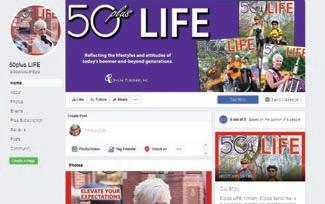





I appraise my fair share of antique and vintage clocks via my public appraisal events and through photo submissions to my website. Some of the most intriguing clocks of all types are from the late 19th and early 20th centuries.
While the early 20th century saw the advancement of many New England clock factories, some of the most famous clock shops were based in Connecticut, such as Waterbury Clock Company, Seth Thomas, Ingraham Company, Eli Terry, and Ansonia Clock Company.

Known locally in southern Connecticut as the New Haven Clock Shoppe, the New Haven Clock Company produced clocks featuring cast bronze Art Nouveau cases, arched wooden cases that recall Gothic buildings, and hand-painted ceramic cases as well as mantle clocks, wall clocks, shelf clocks, etc.
In 1884, Chauncey Jerome relocated his clock factory from Bristol to New Haven, Connecticut. The new factory and office location was situated on 2 acres of land near the predominantly Italian immigrant community of

Wooster Square and within proximity to the Mill River and downtown New Haven.
Jerome was trained by Eli Terry, the famed clockmaker. Jerome made great strides in the clockmaking business as he discovered the stamping method for making clock gears rather than utilizing the expensive method of producing gears in cast metal.
This production method was a major costsaver and allowed the New Haven Clock Company to produce the lowest-priced clocks in the world. This was a great boost to business.
The New Haven Clock Company capitalized on its low-cost stamped-gear clocks and introduced other clockwork production innovations.
For instance, glow-in-the-dark wristwatches with radium-laced dials were mass produced by the firm and shipped to soldiers serving abroad during World War I. The downside was that factory workers working on these products, known as Radium Girls, suffered radiation poisoning.
please see CLoCKS on facing page




From 1974 to 1982, Sweden’s ABBA quartet sold a reported 400 million discs while leaving behind a legacy of now-classic creations. And, along the way, ABBA heard no complaints from the owner of a Swedish fishcanning factory. (More about that later.)
ABBA consisted of two married couples from Stockholm: Björn Ulvaeus and Agnetha Fältskog, and Benny Andersson and Anni-Frid Lyngstad. Ulvaeus and Andersson had worked together for years in various groups.
In 1971, they released a Top 5 Swedish single — “Hello, Old Man” — which, for the first time, featured their wives accompanying them on the recording. Later Björn & Benny 45s didn’t do as well, though, and for the next three years the musicians struggled to keep their names alive on the music scene.
Enter Stig Anderson. An ex-teacher who had written hundreds of songs during the 1960s, he had started Polar Records in the early 1970s. Now he needed to find the right artists to send him on a rocket ride to success and, hopefully, wealth.

“Waterloo” ABBA August 1974
Anderson met his goal with Ulvaeus and Andersson and their fetching wives. He named the quartet ABBA, using the first initial of each of their first names.
Now he needed to get them noticed in a big way.
The Eurovision Song Contest had been held annually since 1956 and was often a highlight of the European TV year. Up to 600 million viewers watched each event, with hopeful participants representing their home countries, performing original three-minute songs.
The prize handed to the winner seemed absurd: a 1950s-style glass radio microphone. The wide-ranging — and all-important — exposure, though, was priceless.
ABBA entered the contest in 1974 with the Björn & Benny-created
from facing page
During World War II, timing fuses and mine relays were produced to support the war effort. Clock production, though reduced, resumed after World War II but eventually, in 1956, the factory closed.
Some of the factory buildings were leveled to accommodate the new interstate highway system that connects northern and southern Connecticut, from the state’s major cities of Hartford and New Haven, in the late 1950s and early 1960s.
Today, collectors seek out New Haven Clock Company clocks in various designs. The firm produced as

“Waterloo,” which lyrically compared a young woman’s surrender to her suitor’s advances to Napoleon’s being vanquished at the Battle of Waterloo in 1815:
Waterloo, I was defeated, you won the war Waterloo, promise to love you forevermore
(History buffs will delight in pointing out that, while Napoleon was beaten at that battle, he didn’t actually surrender until six weeks later.)
That Eurovision night, Ulvaeus and Andersson were visible and providing onstage instrumentation (Ulvaeus played guitar, Andersson keyboards), but the spotlight mainly fell on their gorgeous wives, resplendent in flashy outfits and frolicking in well-choreographed steps.
The ladies blew more than a few million minds that night, as ABBA swept away the evening’s competition.
Starting with the international smash hit of “Waterloo,” ABBA eventually released hit after hit worldwide. In America, 14 of their Atlantic Records reached Billboard’s Top 40 singles charts, with one — “Dancing Queen” — streaking to No. 1 in 1977.
In 2010, the group was voted into the Rock and Roll Hall of Fame.
A little-known fact is that before Stig Anderson could register the name ABBA, he had to obtain permission to use that name, as a Swedish fish-canning company named Abba Seafood had been around since 1838.
Agnetha Fältskog later recalled that the company owner had initially grumbled, “OK, as long as you don’t make us feel ashamed for what you’re doing.”
Randal C. Hill is a rock ’n’ roll historian who lives at the Oregon coast. He may be reached at wryterhill@msn.com.

many as 300 different types of clocks.
During the late 19th and early 20th centuries, New Haven clocks were marked with two trademark names: Jerome & Co., which was a mark used until 1904, and New Haven Clock Co., which was a clear mark found on the front dial of many of the firm’s clocks.
A Ph.D. antiques appraiser, author, and award-winning personality, Dr. Lori presents antique appraisal events nationwide, appears on Netflix’s King of Collectibles and History channel’s The Curse of Oak Island and Pawn Stars Do America. Visit drloriv.com or watch her internationally popular selling and thrifting videos on youtube.com/drloriv

About 40 million lightning strikes hit U.S. soil each year, according to the Centers for Disease Control. Although lightning affects all regions in the United States, the Southeastern states are most at risk, with Florida holding the title of “lightning capital” of the country.
Lightning strikes are especially dangerous when they hit a structure, resulting in a fire, or if they hit and electrocute a person. From 2006 to 2021, there were 444 lightningstrike deaths in the United States.
Lightning happens when excess negative electrical charge builds up in the clouds and is discharged in a bolt that jumps to the positive charge on the ground.
Lightning can strike at onethird the speed of light and at temperatures exceeding 50,000


degrees Fahrenheit. It can damage structures made of masonry, wood, concrete, and even steel.
The strong electrical current can heat materials, especially water, to high temperatures, which can cause fire, loss of material strength, and explosions from super-heated steam and air.
Inventor and founding father Benjamin Franklin theorized it was possible to attract lightning bolts. He tied a metal key to his kites, continuing to fly them on stormy days in Philadelphia until he was able to capture a bolt in June 1752. Electricity went down the string of the kite until reaching the key. His kite experiments proved that thunderclouds are electrified, and that lightning is an electrical discharge.















Franklin proposed that a building could be protected from lightning by placing a pointed iron rod at the peak of the building with a wire, often copper, running down the building to another rod buried into the earth.
Once on the ground, the electricity of the lightning bolt would be diluted and absorbed. In 1752 he finalized his design of the first lightning rod, and the following year the first rods were installed.

Franklin’s Experiment, June 1972 by Currier & ives, hand-colored lithograph, 1876.
In the ensuing years, major buildings added lightning rods with great success. The use of lightning rods on roofs in the United States (and later in the rest of the world) has saved countless lives and has prevented unknown numbers of fires.
Eventually, solid-glass balls were incorporated into the design of some lightning rods, just below the highest point. Glass is an insulator and does not conduct electricity. If struck by lightning, the glass will shatter.
This served to confirm an electrical strike and suggest the lighting-protection system should be inspected for damage.
Most residential homes do not have lightning rods due to the rare occurrence of strikes on small structures. Longtime firefighters might disagree.
Today, lightning rods are required on structures over 200 feet tall (60 meters). Most are of the traditional Franklin design.

Credit: “Gay Head Light – with Ben franklin lightning rod. jpg,” by Williamwaterway, licensed under CC-BY-SA-3.0. this 1856 lightning ball assembly mounted with straight-tipped Benjamin franklin lightning rod spire was once installed atop the Gay Head Lighthouse in Aquinnah, Mass. the rod and support ball had been struck several times by lightning, as evidenced by scars on the rod and the cracked ball.
A system of lightningprotection conductors and lightning rods is installed on the building to intercept any lightning before it strikes. A wire enclosure, much like a Faraday cage, surrounds the building to conduct and block electromagnetic fields.
The lightning rods are not guaranteed to withstand the electrical voltage of all strikes, as they vary in intensity. The lifespan of a protection system is about 30 years.
The Eiffel Tower was designed as a giant lightning rod. At over 325 meters tall, the tower receives an average of five lightning strikes per year. Construction cranes often serve as another example of a modern lightning collector.
Doris Montag is a homespun historian and an exhibit curator who researches and displays historical collections of ordinary things, such as can openers, crochet, toy sewing machines, hand corn planters, powder compacts, egg cartons, and more. Contact or follow her on Facebook, HistoryofOrdinaryThings.





Your toes didn’t wait long before they started tapping.
They knew what was coming, almost as soon as the band was seated. They knew before the first notes were played and the hep cats and jazz babies hit the floor to cut a rug.
Daddy, it was the bee’s knees, but in the new book The Jazzmen by Larry Tye, if you were the sheik on the stage, makin’ cabbage wasn’t all that swank.
Louis Armstrong was born in 1900 or thereabouts in a “four-room frame house on an unpaved lane” in a section of New Orleans called “Back o’Town ... the Blackest, swampiest, and most impoverished” area of the city.
His mother was a “chippie,” and the boy grew up running barefoot and wild, the latter of which led to trouble. At age 12, Armstrong was sent to the Colored Waif’s Home for recalcitrant Black boys, and that changed his life.


By Larry tye
c. 2024, Mariner Books 395 pages
At the “home,” he found mentors, father figures, and love, and he discovered music.
For years, Bill “Count” Basie insisted that he’d grown up with “no drama, no mystery, and nobody’s business but his,” but the truth was “sanitized.”
He hated school and dropped out in junior high, hoping to join the circus. Instead, he landed a job working in a “moving-picture theater” as a general worker. When the theater’s piano player didn’t come to work one day, Basie volunteered to sit in.
He ultimately realized that “I had to get out ... of Red Bank [New Jersey], and music was my ticket.”
Even as a young teenager, Edward Ellington insisted that he be treated like a superstar. By then, his friends had nicknamed him “Duke,” for his insistence

on dressing elegantly and acting like he was royalty. And he surely was — to his mother and to millions of swooning female fans later in his life.
Three men, born at roughly the same time, had more in common than their basic ages. Two of them had “a mother who doted on ... him.” All three were perform-aholics. And for all three, “Race ... fell away as America listened.”
Feel up to a time-trip back a century or more? You won’t even have to leave your seat; just grab The Jazzmen and hang on.
In his introduction, author Larry Tye explains why he so badly wanted to tell the story of these three giants of music and how Basie’s, Ellington’s, and Armstrong’s lives intersected and diverged as all three were nearsimultaneously performing for audiences worldwide.
Their stories fascinated him, and his excitement runs strong in this book. Among other allures, readers used to today’s star-powered gossip will enjoy learning about an almost-forgotten time when performers took the country by storm by bootstrapping without a retinue of dozens.
And as for the racism the three performers encountered? It disappeared like magic sometimes, and that’s a good tale all by itself here.
This is a musician’s dream book, but it’s also a must-read story if you’ve never heard of Basie, Ellington, or Armstrong. The Jazzmen may send you searching your music library, so make note.
The Bookworm is Terri Schlichenmeyer. Terri has been reading since she was 3 years old, and she never goes anywhere without a book. She lives on a hill in Wisconsin with two dogs and 14,000 books.


Listings with a screened background have additional information about their services in a display advertisement in this edition. This is not an all-inclusive list of agencies and providers. The CCRCs listed are sponsoring this message. These advertisers are eager to provide additional information about their services.

bethany Village
325 Wesley Drive
Mechanicsburg, PA 17055
Stephanie Lightfoot Director of Sales & Marketing (717) 766-0279 slightfoot@asbury.org www.bethanyvillage.org
cornwall Manor P.O. Box 125 Cornwall, PA 17016
Jennifer Margut VP for Marketing & Public Relations (717) 274-8092 marketing@cornwallmanor.org www.cornwallmanor.org
homeland center
1901 North Fifth Street Harrisburg, PA 17102 (717) 221-7900 jmurray@homelandcenter.org www.homelandcenter.org
Stoneridge retirement living communities
Poplar Run – (717) 866-3200
Church of God – (717) 866-3200
Towne Center – (717) 866-3200
Schoolyard Square – (717) 866-3200
Marnie Antonik VP of Sales, Marketing, Media & Communications
marnie.antonik@srlcommunities.com www.stoneridgeretirement.com
Willow Valley communities
600 Willow Valley Square Lancaster, PA 17602
Margie Seagers Manager of Sales (717) 464-6800 info@willowvalley.org www.willowvalleycommunities.org
alzheimer’sunit/Programhealthcarecenter(onsite)MedicalProfessionals(onsite)MedicarecertifiedMedicaidcertifiedlaundry/linen Serviceavailable transportationavailableemergencyresponseSystemWellness/fitnesscenter/Pool lifelonglearningopportunities(onsite)event/entertainment(onsite)
certifications and comments:

Bethany Village is a senior living community of energetic people who truly care about one another.
Cornwall Manor offers countless opportunities for staying active, engaged, and fullfilled while knowing extended care is available when needed.

Homeland’s proud tradition of exceptional care includes a vibrant personal care and quality skilled nursing home, along with community outreach services throughout south-central Pennsylvania.

Part of your community since 1924, StoneRidge has been creating senior living environments and communities that are designed to enhance the bonds and benefits of community as we continue to follow Christ’s loving example through our mission and our core values.
Lifecare community in Lancaster, PA. Luxury amenities, award-winning programming, over 100 distinctive floorplans, stunning 210-acre campus.

Several months ago, as I was walking through the gym to my SilverSneakers class, I noticed an elderly gentleman doing something on a treadmill that I had never seen before. He was walking backward!
Strange, I thought. But then I became curious as to why.
Walking is acknowledged as an affordable, accessible, and effective form of exercise that everyone can benefit from. We likely only think of moving forward when heading out for a walk, but what if I told you that you should turn around and walk backward next time you lace up those sneakers?
The simple but unique twist on walking will firm the backside, improve mobility, support joint health, and more. Backward walking, also called retro-walking, involves precisely walking backward while maintaining proper posture and balance.

The movement engages muscles differently from forward walking, activating the glutes, hamstrings, and calves and stretching the quads and hips.
Walking backward has benefits beyond toning, too. It can help improve coordination and is a great way to switch up the workout routine and challenge


















the mind and body in a new way. You use other muscles to walk backward, and you train your muscles to work differently. This affects the brain and nervous system in new ways, helping activate direct pathways involved in the movement itself as well as indirect pathways that help the brain grow and develop new neurons and synapses.
Walking backward definitely provides some benefits; the most apparent difference between walking backward and walking forward is that walking backward requires more focus and coordination.
The primary muscles used to propel you forward are the quads, hamstrings, and calf muscles. Walking backward engages the glutes, hamstrings, and even the shins, which help to maintain balance.
Plus, while walking backward, you naturally engage your core muscles to maintain stability and balance, contributing to better posture and spinal alignment.
The increased mobility gained from walking backward can make everyday movements more comfortable and effortless. According to a study, people who walked backward improved their balance, length of their steps, and speed of their steps.
Additionally, the study showed that backward walking can put less strain on the joints. So, if your knees, ankles, or feet feel sore or stiff, try walking backward to loosen things up.
Walking backward can help develop coordination, strength, flexibility, and cardiovascular fitness. Below are three ways to incorporate backward walking into your routine.
Start small: Ease into it by simply walking backward throughout your day. You can walk backward down a hallway in your house, from the kitchen to the family room, or down the driveway to get your mail.
Try intervals: During your daily walk, walk forward for five minutes and then backward for one minute. Repeat this routine a few times.
If you want to incorporate even more backward motion, make the interval lengths equal by walking for one block forward and then one block backward or one minute forward and one backward.
Use the treadmill: Walking indoors on a treadmill provides a great way to incorporate some backward walking with assistance. Since treadmills have handrails, they offer more stability and will help with balance as you get used to the new movement.
Step on the treadmill backward and start the belt at a low speed, slower than you typically walk forward, and rest your hands lightly on the handrails before stepping on the belt.
Nancy J. Schaaf, a retired RN, worked as a school nurse, a nurse supervisor at a men’s prison, and a health educator. She earned her BSN at Edinboro University. She is a freelance writer whose health articles appear in magazines throughout the U.S. and Canada. She can be reached at nancyjschaaf@gmail.com.

September 21, 2024
Overlook Park, Lancaster
Registration at 9:00 a.m. • Walk at 10:00 a.m.
October 26, 2024
John C. Rudy Park, York
Registration at 9:00 a.m. • Walk at 10:00 a.m.
November 2, 2024
City Island, Harrisburg
Registration at 9:00 a.m. • Walk at 10:00 a.m.
Easy online registration at www.alz.org/gpawalk.
•
Volunteer opportunities available.
•
Teams and individuals welcome.
Registration brochures, team packets, and sponsorship packets available. For more information, please contact:
Harrisburg, Lancaster, and York Walks Asheleigh Forsburg (717) 678-6463 x1791; aforsburg@alz.org
Alzheimer’s Association 2595 Interstate Drive, Suite 100 • Harrisburg, PA 17110












